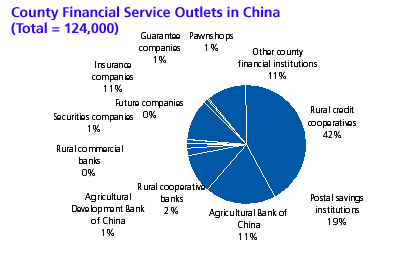Rural Finance in China
Abstract
The need for financial services in China’s rural areas is increasing at an unprecedented pace. The emerging demand represents great potential growth for financial institutions in the area.
China’s rural market is a vast, untapped territory. Improving farmers’ incomes and building financial institutions and outlets close to rural households will spur rapid growth in the region. In a new report, , Celent discusses the population and economic background of China’s rural area.
There is an acute lack of financial resources in the rural area. Given the poor operating efficiency and grave loss of outlets in the rural market, state-owned commercial banks began pulling out of the area on a large scale basis at the end of the 1990s. Rural banks and credit cooperatives also cut down and merged their service outlets, resulting in a decrease in the number of county financial institutions. As of the end of 2007, the number of county finance institutions’ outlets slumped by 9,811 or 7.3% since 2004, declining to a total of 124,000 outlets. Banking outlets exhibit a characteristic of comparatively heavy density in county seats and low density in towns and villages. At the end of 2005, only 3.28% of the administrative villages had financial institutions.

"In the past, farmers principally used banks just to deposit and withdraw money. With the development of the rural economy, however, farmers’ demands have become increasingly diverse, and have expanded to include deposits, loans, and remittances," says Wenli Yuan, Celent senior analyst and author of this report. "With the increase in demand, the issue of financial scarcity becomes increasingly urgent."
This report explores the banking and insurance industries in China’s rural market. With regard to banking services, the loan needs of farmers and rural enterprises touch on a growing trend. It is critical that financial institutions provide good loan services for farmers and rural enterprises if they wish to enter the rural market.
On the whole, the rural area’s insurance services are characterized by small premium scales, scanty sales and service outlets, single sales channels, and poor focus of insurance programs and employees. Currently, the rural market is mainly occupied by several large insurance companies, and the competition is not fierce. This situation, however, will be reversed, because the China Insurance Regulatory Commission has approved the establishment of specialized agricultural insurance companies, and many other companies have noticed the potential of the rural market.
The 58-page report includes 10 tables and 21 figures. A table of contents of this report is available online.
Members of Celent's Corporate Banking, Retail and Business Banking, Life/Health Insurance, and Property/Casualty Insurance research services can download the report electronically by clicking on the icon to the left. Non-members should contact info@celent.com for more information.
